You are here
Pamir nountains.
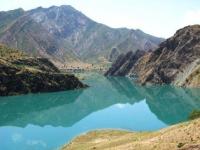
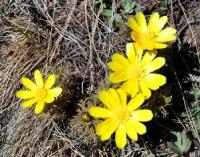
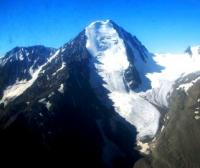

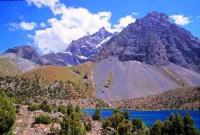
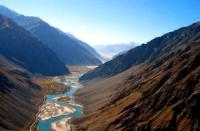
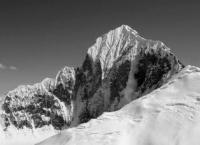
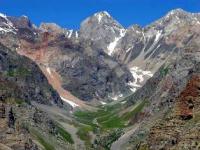
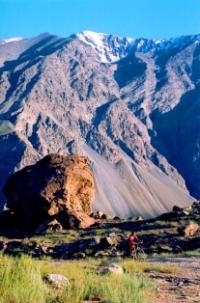
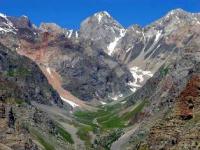
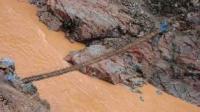
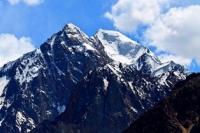
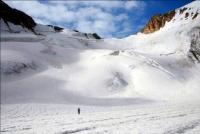
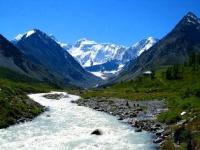
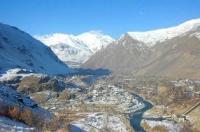
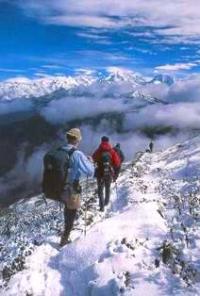
Tours in the Pamir mountains.
“In books I have traveled, not only to other worlds, but into my own”
Anna Quindlen.
Sights Pamir mountain.
There is a conception that Pamir is a highland located to the south of Fergana hollow. However, it is better to call it Pamir-Alai. But geographers used to separate northern territory of these mountains from the basic part of Pamir. It is located between Fergana and Alai valleys.
It has several names: Pamir-Alai, Southern Tien-Shan and Gissar-Alai. The first name is old and many researchers put different sense in it, the second name is used very seldom. The third is the most informative toponym as the basis of these mountains is Alai and Gissar ranges with spurs.
Their geological structure differs from other part of Pamir - Western, Eastern and Kashgarsky Pamir. In our book we widely use toponym Pamir and under this meaning we understand all mountain system located between Fergana valley and mountains of Hindu Kush.
But if necessary we distiןguish Gissar-Alai too. Such concepts as Pamir-Alai, Kashgarsky Pamir, Southern Tien-Shan and Pamir itself are the issues of discussions. But we won't discuss it here. In our book under Pamir we understand all mountain system located between Fergana hollow, Pamir-Pyandzh River valley and Tarimski hollow including Gissar-Altai, actually Pamir and Kashgarsky Pamir.
There are many opinions concerning "Pamir" origin. Toponym "Pamir" is very ancient; probably it is at least two thousand years old. Sometimes this is attributed to Iranian word "bam" that means "roof". Thence arise a corny phrase "Pamir - a roof of the world".
But there is another interpretation of this name going back to ancient Iranian "Pa-i-mihr" that means "foot of Mihr" (god of Sun). Also there are some other interpretations. Pamir is characterized by prevalence of ranges of sub-latitudinal spread.
Rather long of them are Turkestansky, Zeravshansky, Gissarsky, Alaysky, Zaalaysky, and Northern Alichursky with Rushansky, South Alichursky, Vanchsky, Jazgulemsky, Shahdarinsky, Vahansky and others. Ranges of sub-meridional spread are rare here and include Sarykolsky, Ishkashimsky and the range of Academy of Sciences.
The highest top of Pamir highland is Kongur Peak (7719 meters) located in Kashgarsky Pamir (China). The second highest top is Kongurtuybetag (7595 meters), the third is Muztagata (7546 meters) located in the same place.
The highest top of Tajikistan is Ismail Samani Peak (7495 meters) which was named as Stalin Peak at the moment of its discovery in 1933, and later it was renamed to Communism Peak. The third name was given in memory of the founder of Samanids medieval dynasty and the founder of one of Central-Asian states in IX - X centuries AD.
Two other mountains of at least seven thousand meters in height in Pamir are Lenin Peak (former Kaufman Peak) in Zaalaysky range with the height of 7134 meters and Evgeniay Korzhenevskaya Peak (7105 meters) located in northwest spur of the range of Academy of Sciences.
Probably, it is a unique seven-thousand meter mountain in the world which bears the name of real woman and was named by the well-known researcher of Central Asia Mountains N.L. Korzhenevsky (1879 - 1958) in honour of his wife.
The history of Pamir investigation is rather short. First information about it belongs to Chinese traveler - missionary Syuan- Jiang who has visited Eastern Pamir in VII century on his way to India. He wrote: "Pa-mi-lo stretches between two snow-covered mountain chains.
Winds rage all day and night. Soil is impregnated with salt ... Having entered this waste lands you won't see human habitation ... ". He also describes "Dragon's Lake", probably it was Karakul Lake. In XIII century Pamir was crossed by Marco Polo who for the first time described wild rams.
In second half of XIX century scientific researches in Pamir were conducted by Russian scientists A.P. Fedchenko, N.A. Severtsov and I.V. Mushketov. Especially intensive complex studying of Pamir was conducted by Soviet scientists during the period from 1928 till1936 under the guidance of N.P. Gorbunov.
Actually Pamir can be divided into two parts - Western and Eastern which differ in relief and andscapes. The borders between these two parts coincide with a meridian of 73 degrees of east longitude. In many respects the relief of Western Pamir is similar to Gissar-Alai.
It is characterized by deepest gorges - ravines alternating with sharp range spines. Limestone eroded and dissolved by natural waters that promote formation of deep cuts and karts caves is widespread there. Many mountain tops are Peaked and difficult for ascent.
Eastern Pamir looks differently. First of all attention is paid to uplands – extensive high-altitude plains located at absolute height of about 4000 meters which are limited by massifs seeming low in comparison with 4000 meters level, but actually they rise up to 5000 and in some places reach 6000 meters.
Uplands of Eastern Pamir look like small particles of Tibet interspersed with Pamir. Uplands around Karakul, Rangkol Lakes and in Oksu Riverhead are especially expressive. Pamir represents large area of modem glaciation. Total area of Gissar-Alai, Pamir and Kashgarsky Pamir glaciers reaches 12000 square kilometers, and total number of glaciers both large and small probably is not less than 13000.
In the Western Pamir near the border with Eastern Pamir there is the biggest glacier of Eurasia - Fedchenko glacier. Its length is 77 kilometers and thickness in the middle part reaches about 1 kilometer, total area is about 650 square kilometers, and volume is 93,6 cubic kilometers that is bit less than that of Balkhash Lake.
This area is comparable with the area of Singapore. In the mountains of Asia only the largest Karakoruma Siachen glacier with the length of about 76 kilometers can be compared with Fedchenko glacier. This glacier is named after A.P.Fedchenko, the first researcher of Pamir.
Climatic conditions of Pamir are extremely various. Deserts are located at the foot of the mountains. Average annual temperature here is 12-15°C. Winter is usually soft with little snow and snowless in some areas. Frosts give way to frequent thaw.
Atmospheric precipitations are rare event with up to 100 - 150 mm of precipitation a year, mainly fall in spring. The climate of this region is continental and varies from year to year. Sometimes in January there are hard frosts 10 - 20°C and rather often air temperature rises up to 10 - 15°C in the dead' of winter.
Considerable is the level of air temperature fluctuation at different heights, the average annual and monthly air temperature drops by 0.6° every 100 meters. Therefore in the north of highland at absolute height of about 3000 meters average annual air temperatures drops below
zero and in the south of Pamir such picture is observed at the height of 3600 - 3800 meters. It is supposed that at 7000 meter level average temperature decreases up to -25°C. Special climatic conditions are formed in intra-mountain hollows of highlands where overcooled air stagnates during wintertime.
For example, on Bulun- ֺKul Lake, which bottom is at the altitude of about 3800 meters above sea level, unusually low average annual air temperature is -5,4 C. And at local meteorological station minimal air temperature drops up to -63°C. It is "cold pole" of Central Asia!
Highland's atmospheric humidity is changeable too and fluctuates at different heights and from place to place at the same altitudinal belt. Usually, the higher in the mountains the amount of atmospheric precipitation increases.
Much of them fall in outskirts of the range, mainly in western and northern skirts of Pamir. So, much of atmospheric precipitation fall on southern slopes of Gissarsky range up to 1600 - 1800 mm a year. As a rule, much atmospheric precipitation falls in winter time, therefore there is a lot of snow in valleys of Gissarsky range and in some places snow-cover thickness reaches several meters there.
Humidity level is also very high on one of the tops of Pamir - area of Ismail Samani Peak. This massif catches humidity-carrying air flows moving from the West which could not be impeded by smaller in height Gissar Mountain and its spurs. The driest places in Pamir are internal high-altitude territories located in Eastern Pamir at the altitude of about 4000 meters. Annual amount of precipitations is less than 100 mm and in some places only 40 - 50 mm and even less in different years.
Hence, Pamir is both "cold pole" and "dryness pole" of Central Asia! Actually there is no snow-cover in Eastern Pamir during wintertime: only during rather snowy winters snow-cover forms small islets among snowless spaces.
Strong winds blowing a year round are typical for high mountains of Pamir. And the higher is the mountain the stronger is the wind. Climbers know about it. 1hat is why at the heights of more than 5000 - 6000 meters with sufficient amount of precipitations, snow is blown off and steep rocky slopes are snowless even in winter.
Variety of climate of Pamir is the reason of great mosaicity of natural components. Formation of numerous so-called cryogenic forms of landscape is connected with short-term, seasonal and perennial freezing of soils and different sediments.
One of them are tiny (rock ranges and belts, frost mounds - tufurs and frost-shattered cracks), others are large enough, they are soliflual lobes on the slopes, thermokarst depression and cryogenic landslips. But the most impressive of them are rock glaciers.
The height of the mountains, geographical position, humidity and spatial position of slopes (exposition and steepness) predetermine the mosaic structure of soil-vegetative cover. Woody vegetation (lignose) is widespread in Gissar-Alai and Westeen Pamir. First of all it is juniper (juniper woods).
Unlike Northern Tien-Shan where dwarf juniper prevails, this area is characterized by treelike species which quite often reach 15-20 meters in height and has a trunk of 1 meter in diameter. Juniper light-forest in Gissar-Alai and Western Pamir is located at the height of 1700 - 3200 meters above sea level.
Tien-Shan fir is not typical southward of Fergana hollow; however it can be met here and there in eastern part of Zaalaysky range on the border of China with Kyrgyzstan. In Nury River basin (right tributary of Kazylsu Vostochnaya) at the height of 3250 - 3300 meters small Tien-Shan fir forests can be met.
Trees are stunted: trunks are bent and some of them have got creeping form that is not characteristic for this kind of fir-tree, and only isolated firs can reach 10 meters. Mountain ash, honeysuckle, black currant and pea shrub grow in under-brush.
In Kashgar Pamir (Kingtau range) isolated Tien-Shan fir-trees grows on the most humidified slopes. Other tree species in Pamir are basically concentrated in riparian forest - small forest belt, which goes parallel with mountain Rivers. In riparian forest of Gissar-Alai and Western Pamir such tree species as willow, poplar, sea-buckthorn birch and various bushes grow: honeysuckle, barberry, brier and others. Sometimes woody vegetation can be met at the height of 4000 meters.
As an example of it is Shugan willow growing in Western Pamir.Landscape of Pamir is rather various: on mountain slopes one can see deserts or dry steppe and small islets of meadows and sparse wood or bushes in River valleys.
Deserts are quite typical for Pamir. Conditions for deserts forming are especially favorable in the Eastern Pamir where main vegetation is represented by xerophilous subshrub eurotia, forming extremely rarefied vegetative cover.
Deserts in Pamir rises to the height of 4700 meters. It will be recalled that the highest summit of Alps - Mont Blanc - is little bit higher of this altitude. Alpine meadows so usual for Tien-Shan, Caucasus and Alps are rather rare and are more peculiar to northern outskirts of Pamir.
As a rule for their growing they need much moisture. Mountain tundra is also rare in Pamir. Top "floor" - glacial-nival belt - dominates basically above 4500 meters. This is a kingdom of glaciers, rocks and taluses. Western Pamir is especially famous for huge taluses. Agriculture zones in Pamir are displaced highly upwards. It is defined by mountains aridity and southern position. Such heat-loving cultures as fig and pomegranate, in the Western Pamir are cultivated approximately to height of 1600 meters, and grapes up to 2000 meters (in Northern Tien-Shang potato hardly grows ripe at this height), walnut bear fruits at the height of 2300 meters, and apricot at 2700 meters. Barley and peas grow ripe even at the height of 3500 meters. In valleys of Western Pamir peach and mulberry are widely spread.
In Western Pamir at the altitude of2300 meters near Khorogwell-known Pamir botanical garden based in 1940 is located. It is the most high-mountain botanical garden in Central Asia. Its unique collection includes about 300 kinds of plants including even grapes!
The fauna of Pamir is rather poor due to scarcity of vegetation. The most interesting animals are argali (wild mountain rams), Siberian mountain goats, snow leopard, bear, red or long-tailed marmot. Among birds Tibetan snowcock is typical for these places.
There are many tolai hares preferring deserted habitation in Pamir. Its Tadjik name was included into the name of one of the parts of Eastern Pamir - Hargush Pamir. The fauna of Gissar-Alai is somewhat richer, besides aforesaid animals, there are many large carrion-eating birds, as vultures, bearded vultures and others.
Amu Darya trout is found in Vakhsh Riverhead. This noble fish is native, endemic of local Rivers. It differs from Sevan and rainbow trout which have been taken to Issyk Kul and Northern Tien-Shan Rivers from Armenia and Czechoslovakia.
Amu-Darya trout lunkers can reach weight of 5 kilograms. Very often trout is confused with naked osman which like a trout has tiny spots on the body. Naked osman is not a marketable fish, but it strongly attracts fishers.
Small mountain Rivers of Pamir teem with osman which can be easily caught: it can be easily caught using homemade fish hook made of a pin. Meat of osman is very tender and tasty, but when dressing, you should remove black film out of abdominal cavity.
Pamir-Alay is rich in variety of minerals which deposits are not so large as in Altai or Central Kazakhstan, but rather unique. Lazurite deposits “heavenly stone" lyadzhvara are well-known. This is unusually beautiful mineral used for manufacturing of ornaments and is extracted in the extreme southwest of Pamir, in Ishkashimsky range at absolute altitude of about 5000 meters.
Lazurite extraction is conducted since ancient times. Marco Polo wrote that azure of these places is the best in the world. Also there is Kuhi- Lal Mountain (Ruby Mountain) where rubies are extracted. Marco Polo also reported about this mountain.
Pamir is also famous for other semi-precious stones: amazonite, spinel, amethyst, topaz, jasper. Near Medvezhy glacier rock crystal is extracted at great altitude. Pamir is a pantry of minerals decorating human life.
Deposits of antimony and mercury in northern spurs of Alaysky range are unique. Haydarkan (ֺirghizia) region is especially famous for deposits of these minerals. There are large deposits of copper ore in Zeravshansky and Gissar ranges. In foothills of Alaysky and Turkestani ridges, especially in Fergana hollow, large oil and gas fields have been found.
There aremany coal deposits; but deposits are not large though extraction is rather unique: mining is carried out at the height of 5200 meters. Coal there is fed not "on mountain" but from the mountain. Gissar-Alai is rich in gold, iron, complex ore, tin, molybdenum and tungan ores and many other minerals, such as talc, asbestos, mica, marble and others, it's impossible to call all of them.
There are many thermal and mineral springs, and Garm-Chashma located in 40 kilometers to the south of Khorog in Ishkashamsky Mountains in the valley of one of tributaries of Pyandge is the most interesting. Spring temperature reaches 50 - 75°C.
Also there are some micro-geysers of 1,5 meters in height. Around the spring there are snow-white, yellowish and bluish drips of limy tuff. Here, at the altitude of about 3000 meters, there is hydropathic establishment -one of the most high-altitude hydropathic establishments in the world.
What is Pamir especially remarkable for? Pamir is a land of contrasts. Both the highest world tops and vast valleys, permafrost goes together with deserts and impetuous mountain Rivers supplying the Lakes with icy water can be met there.
Karakul Lake is the largest Lake in Pamir: its area is 380 square kilometers, length - 33 kilometers, maximal width is 23 kilometers and the greatest depth is 238 meters. Water volume reaches 26,5 cubic kilometers that is approximately a quarter of that of Balkhash Lake.
Karakul Lake is located in the Eastern Pamir at the height of about 3900 meters. In the beginning of XX century two peninsulas divided Lake into eastern and western parts. Then the water level in Lake has increased and northern peninsula became an island but such conditional division has remained the same.
The western part is bigger and deeper and eastern part of the Lake is shallow with maximal depth up to 28 meters. Water in the Lake is slightly-salted, only 1 g of salt per liter. It is at least 200 000 years old. Sometimes water level rose by 140 - 180 meters than today's level, and it often used to fell by 10 meters.
With water level raising by 37 meters the Lake becomes running, that means that the water flows to Kokuibelsu valley, and then to Pyandge. Karakulsky hollow is surrounded by high mountains with glaciers which reach high-altitude points of 5000 - 5900 meters.
Permanently frozen stratum and sometimes ice-covered is uncovered on the coast of the Lake, mainly on its eastern side. From time to time lenses of ice of 5 meters in height peep out. Huge crystals of ice, about 100 centimeters in diameter, have been found there.
Perhaps, it is the largest crystal among all known in the world. Ice here is a result of long-term frost penetration of Lake deposits in the shallows. For the first time well-known Russian geographer G.E. Grumm-Grzhimaylo who has visited Karakulin in 1884 has reported on them.
For the first time the depth of Lake was measured by known Swedish traveler S. Gedin in spring of 1894. The Lake is surrounded by high-altitude desert where basically xerophilous semibush eurotia grows. Annual atmospheric precipitation there is about 50 mm.
Average annual air temperatures do not increase above -3,8C, it is always windy there and winters are free of snow. To the north from the Lake, behind Uybulak pass (4250 meters), there is a gloomy place - Markansu River valley. It is often called as "death valley”.
This area is characterized by poor vegetation, it is practically a desert, but icy horizon of permafrost is opened at the depth of about 1,5-2 meters in clay sediments. Markansu Valley is of great interest because the most high-mountainous stopping place of the person who visited these places about 9500 years ago has been found out there.
This stopping place is at height of about 4100 meters. Archeologists just for fun called it "Oshkhona" that is the Tajik for dining room. More than 10000 fragments (chips) of quartzite sandstone, worked by hands of ancient person, as well as birch and juniper coals were discovered there.
oday these trees grow approximately in 40 kilometers from this place. Probably, ancient people had to bring firewood there required for heating of large blocks of sandstone with subsequent rapid cooling to cleave stones in small pieces, which were used for making of stone tools.
Therefore more accurate name this stop should be "Ustokhana" which means workshop. Near Uibulak pass there is the highest sandy desert Kumbeltoo in Central Asia Mountains, barchan sands here reach the heights of 4500 meters.
Muzkol Tract is located to the south from Karakul Lake. It is a valley of small River flowing into the Lake from the south. The place is famous for its huge icing appears every year. In severe winters sometimes it stretched for almost 10 kilometers in length.
In the beginning of XX century scientists noticed that Muzkolsky icing has no time to thaw completely in the late summer and it allows it not to disappear for many years. Icing was formed due to groundwater discharge which waters have formed extensive ice field.
In some places ice thickness reaches 2-3 meters. Muzkolsky icing is the largest in Central Asia Mountains described by many researchers. Southward of icing there is Akbaytal pass (4655 meters) - the highest on highways of Pamir and Tien-Shan.
It is a bit higher than the highest top of Altai - Belukha Mountain (4499 m). Sarezsky Lake is simply called Sarez. The Murghab River runs through Sarez, left tributary of Bartanga running in Pyandge. The Lake is on border of Western and Eastern Pamir at the altitude of 3260 meters above sea level.
Sarez is the youngest Lake of Pamir; it appeared as a result of huge rock massif slip in a valley of the Murghab River. Landslip happened during strong nine-point earthquake on February 18th, 1911. This major earthquake has fully destroyed Tadjik kishlak Usoi and killed many people, that is why this blockage got the name of Usoy.
Above the blockage the River valley was quickly filled with water and in few months the waters have flooded kishlak Sarez and formed the Lake which people began to call Sarezsky. Nowadays the length of the Lake is almost 56 kilometers, its maximal width reaches 3 kilometers and 300 meters, and the greatest depth reaches 500 meters.
Volume of crystal-clear water in Sarez is 16 cubic kilometers and Usoysky blockage volume is about 2 cubic kilometers. From the moment of Lake formation there was a problem of stability of natural dam. Some researchers predicted inevitable break specifying even exact date when this casualty will happen.
But time confirmed the theory of the first researcher A.G. Shpilko, who said that the dam will stay another hundred years, and possibly more. Its break, of course, would be a terrible disaster when huge wave wipes off the face of the earth many settlements in Pyandge and Amu Darya valleys.
However from time to time it causes a concern - what to do if it happens ... But today's situation doesn't give any serious bases to expect Sarez break. Sarez attracts many tourists by unusual beauty: steep slopes covered with huge slide-rocks, huge blockage, whiten crests of the highest Muzkolsky and Northern Alichur ranges, transparent blue of water and numerous traces of natural disaster.
Also unusual is Medvezhiy glacier which is related to so-called surging glaciers. The glacier is located מן the western slope of Academy of Sciences range in Abdukafor River basin. Its length is 16 kilometers, the area is 25 square kilometers, on Pamir scales it is of average size.
Medvezhiy glacier is well-known for prompt motions which were observed in 1916, 1937, 1951, 1963 and 1973. It is supposed, that movement of Medvezhiy glacier occurs every 10-14 years. Between these periods the thickness of glacier skirts increases and looks as though it "swells", inner pressure also increases and then comes discharge - prompt motion.
Usual mountain glaciers move ahead on several centimeters during a day. Medvezhiy surging glacier is able to move forward on 30 - 40 meters, and sometimes even on 100 meters. The period of so fast movement of glacier lasts 100 or even more days.
uring this period the glacier moves forward on 1,5 - 2 kilometers, carrying everything before it and breaking up into separate blocks. Its surface becomes impassable. Sometimes the glacier spring-loads the Abdukagor River that leads to Lake formation, the break of which generates prompt water flow pernicious for every living thing.
Alai valley is located between Alaysky and Zaalaysky ranges. The Kyzyl-Su –one of tributaries of Vakhsh, runs through the valley. Valley-hollow has extension from west to the east of 130 kilometers with width from 8 to 22 kilometers.
The area is 1700 square kilometers; average height of valley bottom is about 3000 meters above sea level. The valley is located within Kyrgyzstan near to the border with Tajikistan. There is the richest vegetative cover: mountain steppes and Alpine meadows prevail.
Alay valley is the most extensive space of fertile high-altitude pastures of Pamir-Alay. Entering the valley from the north from Taldyk pass you can see majestic panorama of Trans Alai range with Lenin Peak. And behind this range there is the gloomiest place of Pamir - Markansu valley.
Picturesque massif of Fansky Mountains is located in Zeravshansky range between the Fandarya and Kshtut Rivers. They consist of calcareous rock and as a result long-term influence of water and strong winds have undergone deep partition, having formed jagged Peaks.
The highest top of these mountains is Chimtarta which rises up to 5494 meters. A little to the west of Fansky mountains Marguzorsky karstic Lakes located between Zeravshansky and Gissarsky ranges, splendour with blueness of water.
Ovrings - original spliced ledge are very characteristic for steep, often vertical slopes of deep gorges and canyons of Western Pamir. There is a special method of building of such ledges: wooden stakes are driven into the cracks of steep rocky walls, which are supported by others stakes.
Poles are placed on horizontal stakes and make flooring. Now the path is ready, it can be used not only for pedestrians but also for loaded horses, donkeys, yaks. The length of some ovrings sometimes reaches several kilometers, quite often they are arranged at height of tens meters over the toe or over mountain riverbed.
Pamir-Alay is rich in caves, especially it concerns to Gissar Mountains and Fansky mountains. Ice cave around Iskanderkyol Lake is well-known among them. Its length is 102 meters. The cave is located at absolute height of 2934 meters.
Many caves are not discovered yet and not investigated. They are waiting for their discoverers-sportsmen and scientists. There are many rough mountain Rivers in Pamir-Alay which are used by sportsmen for rafting. The most popular among them are Vakhsh, Pyandge and their numerous tributaries.
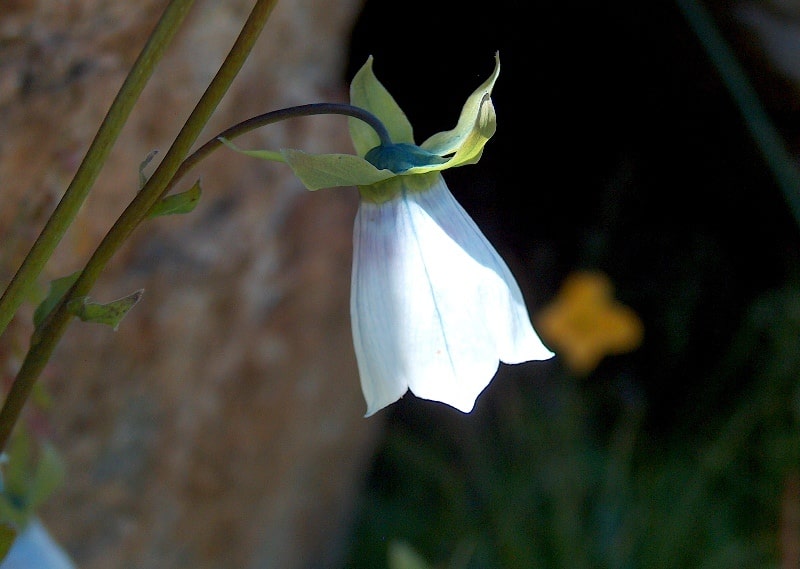
Enlightener:
“Central Asia Mountains”. 2009, Almaty,Publishing house “Mektep”. Authos Aldar Gorbunov, Anna Ivachenko, Sharipa Bisarieva.
Photos by
Alexander Petrov.







